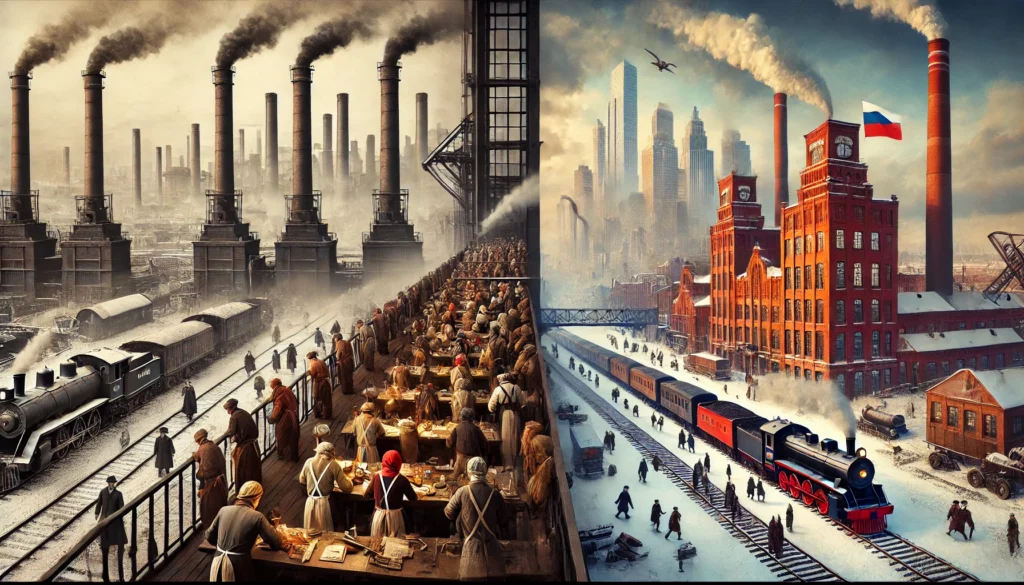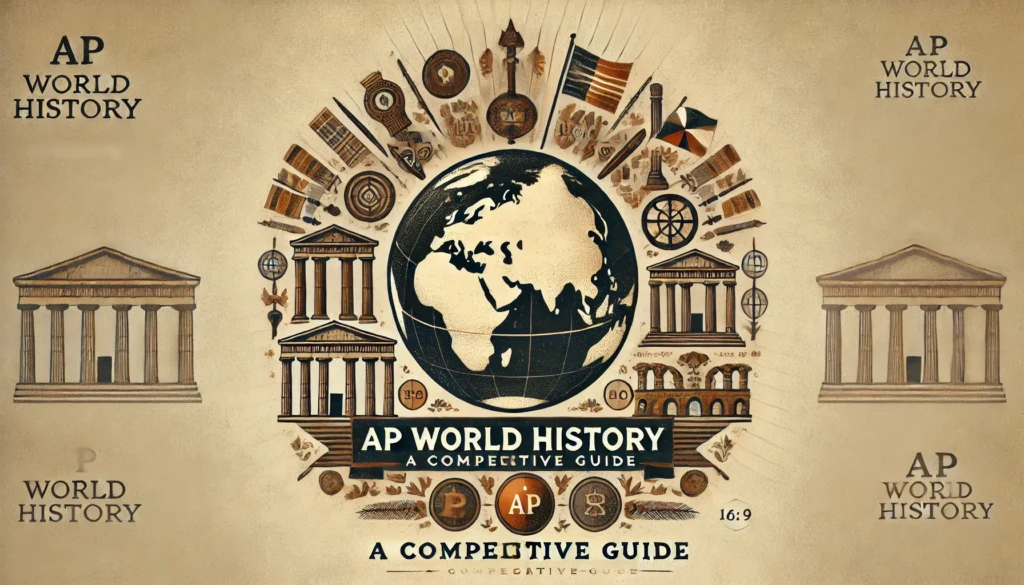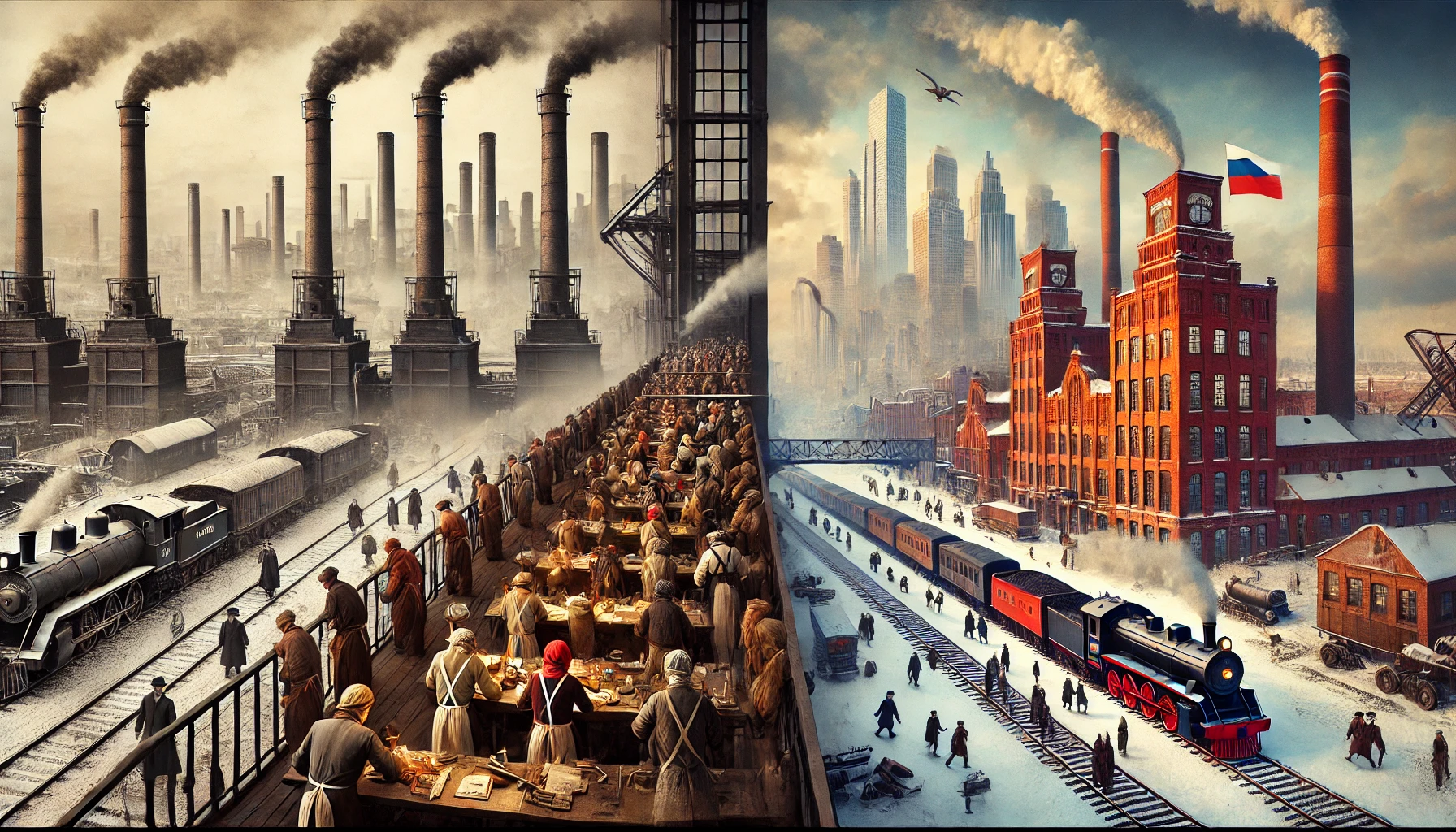Dive into the comparative analysis of Russian and American industrialization in this detailed AP World History guide. Download the free PDF to explore historical insights.
The industrialization era significantly reshaped global economies, societies, and political landscapes, and studying its impact is crucial for understanding the development of modern nations. For AP World History students, comparing Russian and American industrialization offers deep insights into how industrialization unfolded differently across regions. This article explores key aspects of these industrial revolutions and provides a link to download a free PDF guide to support your studies.
Table of Contents
- Introduction to Industrialization
- Overview of Russian Industrialization
- The Rise of American Industrialization
- Key Similarities Between Russian and American Industrialization
- Major Differences Between Russian and American Industrialization
- Social Impacts of Industrialization
- Economic Consequences of Industrial Growth
- Political Transformations During Industrialization
- Why This Topic Matters in AP World History
- Download the Free PDF Guide: Russian and American Industrialization

1. Introduction to Industrialization
Industrialization refers to the transition from agrarian economies to industrial ones, driven by technological advancements and mechanization. While Western Europe often takes center stage in discussions of industrial revolutions, Russia and America present compelling case studies of late 19th and early 20th-century industrialization.
Understanding these transformations helps AP World History students grasp the nuances of economic and social development, imperial competition, and global interconnectivity during this era.
2. Overview of Russian Industrialization
Russia’s industrialization journey began later than in many Western countries, around the late 19th century. Key factors influencing Russian industrialization include:
- Tsarist Reforms: Under Alexander II, serfdom was abolished in 1861, laying the groundwork for a labor market.
- Railroad Expansion: The Trans-Siberian Railway was a monumental project that connected Russia’s vast territory and facilitated trade and industrial growth.
- State-Driven Policies: The Russian government played a significant role in funding and managing industrial projects.
Despite these efforts, Russian industrialization faced several challenges, including a lack of capital, political instability, and peasant unrest.
3. The Rise of American Industrialization
In contrast, the United States experienced rapid industrialization during the late 19th century, often referred to as the Second Industrial Revolution. Key drivers included:
- Natural Resources: The U.S. had abundant coal, oil, and iron deposits.
- Technological Innovations: Inventions like the telephone, electricity, and assembly line revolutionized production processes.
- Immigration: Millions of immigrants provided a cheap and reliable labor force.
The American Industrial Revolution propelled the country into a global economic powerhouse, setting the stage for its dominance in the 20th century.
4. Key Similarities Between Russian and American Industrialization
Both Russia and America underwent significant changes during their industrial revolutions. Some shared characteristics include:
- Focus on Railroads: Both nations prioritized building extensive railway networks to connect regions and boost trade.
- Urbanization: Rapid industrialization led to population booms in cities, creating opportunities and challenges.
- Economic Growth: Industrialization significantly increased productivity and expanded national economies.
5. Major Differences Between Russian and American Industrialization
Despite these similarities, the two nations experienced industrialization differently:
| Aspect | Russia | America |
| Timeline | Began late 19th century | Mid-19th century |
| Driving Force | State-led initiatives | Private enterprise |
| Social Mobility | Limited due to rigid class structures | Higher due to opportunities for immigrants |
| Political Context | Autocratic regime | Democratic government |
6. Social Impacts of Industrialization
Industrialization dramatically altered social structures in both countries:
- In Russia, the working class faced harsh conditions, sparking unrest that contributed to the 1917 revolution.
- In America, industrialization fostered a middle class and improved living standards, though inequalities persisted.
7. Economic Consequences of Industrial Growth
Both nations saw significant economic transformations:
- Russia struggled with uneven development, with industries concentrated in cities like Moscow and St. Petersburg.
- America diversified its economy, with industrial hubs in the Northeast and resource extraction in the West.
8. Political Transformations During Industrialization
Industrialization reshaped politics in profound ways:
- In Russia, discontent among workers and peasants weakened the Tsarist regime, ultimately leading to its downfall.
- In America, the rise of industrial tycoons led to debates about monopolies and labor rights, culminating in progressive reforms.
9. Why This Topic Matters in AP World History
Understanding Russian and American industrialization is essential for AP World History because it highlights:
- Divergent Paths to Modernization: The contrasts between state-led and market-driven approaches.
- Global Impacts: How industrialization affected global trade, geopolitics, and social movements.
- Thematic Connections: Links to broader themes like revolution, nationalism, and imperialism.
10. Download the Free PDF Guide: Russian and American Industrialization
To excel in your AP World History exams, it’s crucial to have reliable study materials. Download our free PDF guide on Russian and American industrialization to access:
- Detailed comparisons and analyses
- Key terms and timelines
- Practice questions tailored for AP exams
| TOPIC | Russian and American Industrialization PDF for AP World History |
| FILE TYPE | |
| LANGUAGE | ENGLISH |
| FILE SIZE | 4.66MB |
| NO OF PAGES | 50 |
| WEBSITE | website link |

FAQ: Russian and American Industrialization
1. What is industrialization?
Industrialization refers to the process by which societies transition from agrarian economies to those based on manufacturing and industry. This involves technological advancements, mechanized production, and urbanization.
2. Why is Russian and American industrialization important to study in AP World History?
Studying Russian and American industrialization helps students understand how different political, social, and economic factors influenced industrial development. It also highlights global themes like modernization, imperialism, and revolution.
3. What were the main differences between Russian and American industrialization?
The key differences include:
- Russia: Industrialization was state-driven, heavily centralized, and slower due to political instability and lack of private enterprise.
- America: Industrialization was fueled by private businesses, abundant resources, and innovation, leading to rapid development.
4. How did industrialization affect the social structure in both countries?
- In Russia, industrialization caused significant unrest among the working class, contributing to the 1917 revolution.
- In America, it created a burgeoning middle class while also exacerbating income inequalities and labor disputes.
5. What role did railroads play in industrialization?
Railroads were crucial for both nations as they connected distant regions, facilitated trade, and accelerated industrial growth. Russia’s Trans-Siberian Railway and America’s expansive railroad network were vital infrastructure projects.
6. What challenges did Russia face during industrialization?
Russia faced challenges like political instability, limited capital investment, poor working conditions, and resistance from the peasant population.
7. What were the driving forces behind American industrialization?
American industrialization was driven by:
- Abundant natural resources
- A large immigrant labor force
- Technological innovations like the assembly line
- Pro-business government policies
8. How did industrialization contribute to global history?
Industrialization shaped global trade, strengthened imperialism, and laid the groundwork for modern economies. It also influenced social movements, revolutions, and political reforms worldwide.
9. Where can I find a PDF guide on Russian and American industrialization?
You can download a free PDF guide from our website, which includes detailed comparisons, timelines, and AP World History practice questions. Click here to download.
10. How should AP World History students approach this topic?
Students should focus on:
- Identifying similarities and differences between Russian and American industrialization.
- Understanding the broader implications of industrialization on global history.
- Practicing essay questions and timelines to prepare for the AP exam.
Conclusion
Russian and American industrialization showcase how different historical, social, and political contexts shape the trajectory of economic development. For AP World History students, this comparison offers invaluable insights into the complexities of modernization. Be sure to download our free PDF guide to deepen your understanding and ace your exams.

oHvOJ jEjBTr fTrit
xru1gh
Really interesting read! It’s great to see platforms catering specifically to Vietnamese players. Easy registration sounds key – I’ll check out the 99win app download and see what games they have! Hoping for a smooth experience.
xjdepmdjuglqqrguqoxtzqswphqijt
It’s great seeing platforms like jl boss games club prioritize secure account creation & verification – crucial for responsible gaming! Finding a site that blends entertainment with player safety is key, especially with diverse game options. 👍
Interesting read! Seeing more platforms like PhilLucky emerge in the Philippines highlights both opportunity & the need for robust security. Registration seems thorough-good sign! Check out phillucky vip for more details, but always gamble responsibly! 🤔
Interesting take on responsible gaming! Seeing platforms like nino gaming slot prioritize RTP (94-98% they claim!) & PAGCOR licensing is a good sign for transparency. It’s about informed choices, right? 🤔